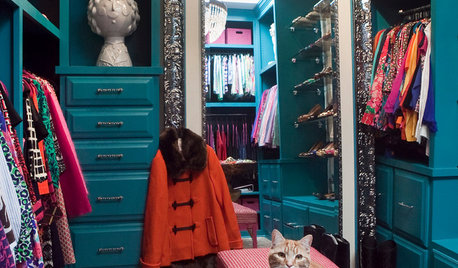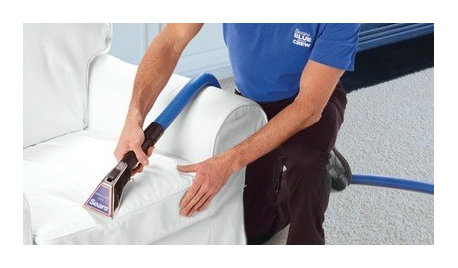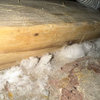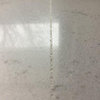Hello,
I posted a few months ago here:
http://ths.gardenweb.com/forums/load/disaster/msg011257293638.html
To summarize - we bought a house built within the last 10 years with a 1,000 sq ft addition. The addition has two walk in closets, one of which has a window. The one with the window has had a very odd smell, since after pressure cleaning and a mold remediation. The smell is musty, and mildly sweet - very unpleasant.
Since the post above, I have done the following:
1. Completely gutted the drywall against the two exterior walls (only Cinderblock and wood studs are exposed now)
2. Gutted the floor and exposed the slab completely (flooring was Quickstep Laminate w/ Eco Ultimate Silencer underlayment - freefloating)
3. Used a 4-to-1 bleach/water solution and saturated the two exposed cinderblock walls, wood studs, the slab floor, and most of the exposed wood around the window. Aired the room out for approximately 3 days after this.
4. Used 1 gal of Microban and saturated the two exposed cinderblock walls, wood studs, the slab floor, and most of the exposed wood around the window. Aired the room out for another 3 days after this.
5. I have two industrial fans inside of the room with a HEPA air purifier just outside of the room facing the door. I keep the A/C around 74 inside of that side of the house.
6. I put a DampRid bucket inside of the room for another 3 days.
Here is where we currently stand -
The room still has an odor - however it's hard for me to tell if it's the same odor, or the odor of exposed cinderblock walls.
Should exposed cinderblock walls have an odor? The room definitely smells different that any other room, and I'm afraid the problem still hasn't been solved.
I noticed that the wood studs affixed to the cinderblock seem to have black mold growing on it (I did treat the mold with the microban and the bleach/water solution - but I did not scrub the mold away or use a negative air machine/air scrubber yet). However, I did find that a bit of black mold growing on wood studs in the wall is fairly normal and should not emit such a pungent odor.
Other than that, I did notice that on ONE side of the slab on the floor, there appears to be about a 1/4 - 1/2 inch gap from where the slab ends to where the cinderblock wall begins. That gap seems to be filled with sand, which is mildly moist - is this normal?
Lastly, the air vent for the central A/C in this room is very small, approximately 3 fins, which is about 4 inches wide by 8 inches long. It's the smallest air vent in the house, and the room is routinely 8 degrees hotter than anywhere else, even with the A/C fully running at 70 degrees. The window in the room is tinted with special 3m film, and reflects a lot of heat and UV.
The roof is also pitched in such a way that there is NO access to the closet from the attic. Instead, the roof pitches so badly that there is literally no way to see what lies above. The only way would be to cut out the ceiling or take the roof apart.
At this point I'm really pulling my hair out. What else do I need to do? Should I treat the room AGAIN with microban? Should I seal the cinderblock walls with a concrete sealer? Should I seal the exposed slab with a concrete sealer? Should I cut out the window and the wood framing around it? Should I disembowel the ceiling? Should I gut the other two walls, which are only drywall and aluminum studs (not facing the exterior) ?
Sorry for the very long post, but I've been fighting with this problem for almost a year now.
I appreciate any help you wonderful guys and gals can provide me.
Thank you!




















toxcrusadr
biodoleOriginal Author
Related Professionals
Artesia General Contractors · Chowchilla General Contractors · Elyria General Contractors · Endicott General Contractors · Kyle General Contractors · La Marque General Contractors · Montclair General Contractors · Muskogee General Contractors · Saginaw General Contractors · Sterling General Contractors · Avenal General Contractors · Artondale Home Builders · Fargo Home Builders · New River Home Builders · Odenton Home BuildersbiodoleOriginal Author
toxcrusadr